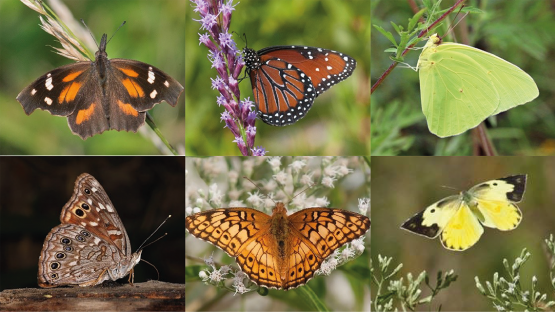Thanks to an IAEA database and the use of stable isotope methods, scientists can determine the migration path of several types of insects, including butterflies. In a study recently published in the journal Diversity, a group of scientists presented the results of the migration of six species of butterflies, from Canada and the United States to Mexico. It is the first study of its kind to establish origins and migration paths of several species in Mexico. Based on this scientific data, authorities can develop strategies to protect these insects on their journey.
“Knowing where butterflies come from during migration helps to inform conservation strategies that may be needed to protect the resources in their breeding areas. Similarly, knowing where they go in winter helps to protect those habitats during the time they are there,” said Leonard Wassenaar, Head of the IAEA’s Isotope Hydrology Laboratory. “The linkage between geographic locations in the annual life cycle of butterflies cannot be established without using isotope methods.”
The research is based on measuring deuterium — a rare isotope of hydrogen — in rainwater, which is directly ingested by animals and humans. As rainwater and its deuterium composition are unique to the area where it rains, rainwater deuterium content serves as a direct marker that scientists can use to identify the origin of individual animals that were grown in different areas by measuring the amount of deuterium in hair, wings, claws, feathers or bones. For butterflies, the deuterium contents are measured in the wings and show the area where the insect was born.
While isotopes have been used for decades to establish with precision the migration paths of some insects, such as the Monarch butterfly (Danaus plexippus), the migration patterns and paths of dozens of other species of butterflies, insects and other migratory animals are yet to be established in Mexico and abroad.






